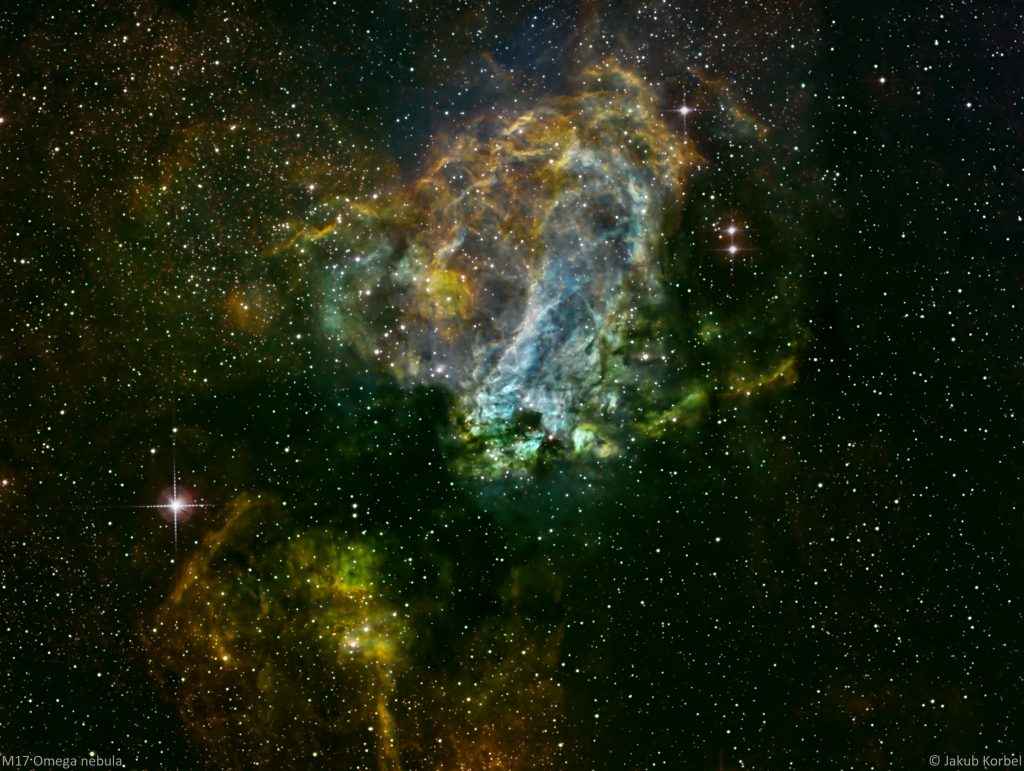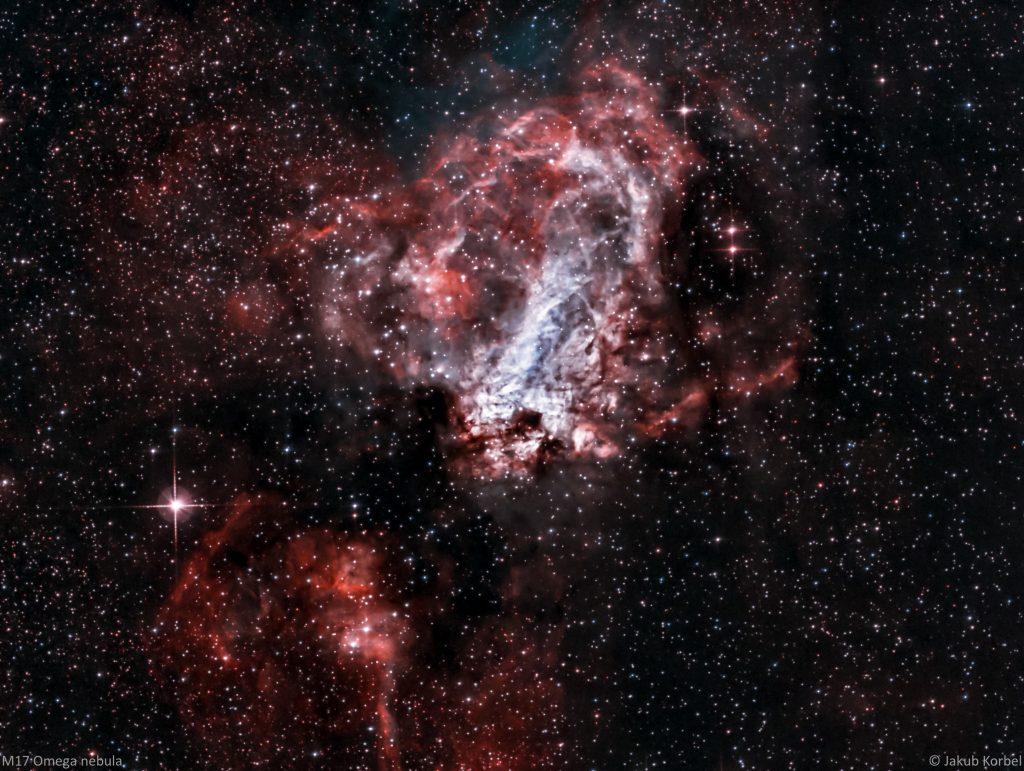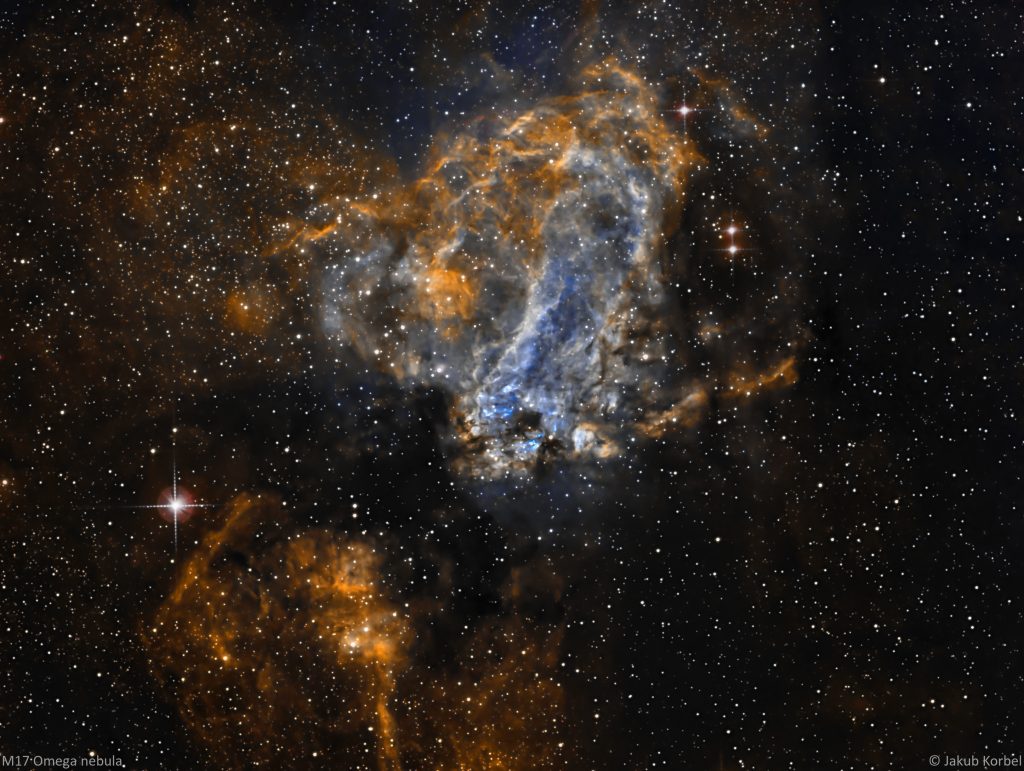Omega Nebula is a giant cloud of the hydrogen gas where new stars are born. It’s around 5000 light years from Solar system and it has 15 light years in diameter. The nebula is located in constellation Sagittarius (The Archer) and it’s the most massive star-forming location in our galaxy. Visual observation is possible, but only with the telescope (medium or big aperture) and from the place with low light pollution.
Since this nebula is visible in summer, there is not enough time to collect enough photons during one night (short nights in summer). Therefore I had to photograph this deep space object several nights (4 in total) and I collected 7.2 hours of the exposure time. Since the light pollution is quite high on the south, I used narrowband filters to collect three channels (H alpha, OIII and SII). I was playing with pixel math and placing partially some narrowband images into Red Green Blue channels and here are the results of my experimentations:
| Telescope: | Newton 254/1000 mm |
| Aperture: | 254 mm |
| Focal length: | 1000 mm |
| Mount | Gemini G53f |
| Autoguiding | ZWO 174MM, TS 60/240 mm |
| Camera: | Moravian instruments G2 8300M @-40C |
| Corrector: | GSO F4 |
| Filters: | Baader Ha, OIII, SII |
| Exposure: | 22xHa, 32xOIII, 32xSII, 300 s, bin 1x1, |
| Date: | 2016-07-05 |



